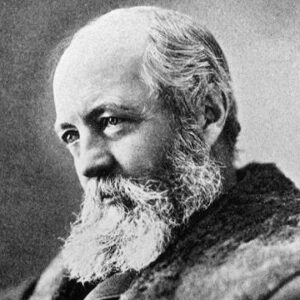Frederick Law Olmsted was an American landscape architect who is frequently referred to as the “father of American landscape architecture” due to his involvement in the design of numerous well-known urban parks, including Prospect Park and Central Park in New York City, as well as Elm Park in Worcester, Massachusetts. He was also instrumental in the planning and construction of the country’s first and oldest coordinated system of public parks and parkways, as well as the country’s oldest state park, Niagara Reservation in Niagara Falls, New York. He had an early interest in nature as the son of a prosperous merchant and grew up to be a creative young man. A diligent student, he was on the verge of enrolling at Yale College for his advanced studies when he was forced to withdraw due to a physical ailment. For years, he struggled to establish himself in any field, working as a clerk, a sailor in the China trade, and a farmer before establishing himself as a journalist. His profession as a journalist brought him into contact with notable landscape architect Andrew Jackson Downing and English-born architect Calvert Vaux. Soon after, Olmstead entered landscape architecture and developed a long-lasting relationship with Vaux; during this time, the two constructed several significant public parks, earning them widespread acclaim and fame.
Childhood & Adolescence
Frederick Law Olmsted was born on April 26, 1822, in Hartford, Connecticut, to John Olmsted and Charlotte Law. His father was a prosperous trader who possessed a profound appreciation for nature, people, and places. Frederick has only one sibling.
Frederick’s mother died when he was a child, and his father remarried shortly thereafter.
Frederick was an excellent student and graduated in 1838 from Phillips Academy. He desired to continue his education at Yale College, but sumac poisoning impaired his eyes, forcing him to abandon his college aspirations.
In the absence of a college degree, he struggled for several years working as a sailor and a farmer. After his vision recovered marginally, he began attending lectures at Yale University on science and engineering.
Frederick Law Olmsted’s Career
In 1850, he traveled throughout Europe and visited public gardens in England, which left a lasting impression on him. He later published ‘Walks and Conversations of an American Farmer in England’ in 1852, which garnered his attention for his writing abilities and launched him into a career as a journalist.
He was commissioned by the ‘New York Daily Times’ to perform comprehensive research on the slave business in the American South and Texas. He sent his findings on a regular basis to the journal, which published them in three volumes: ‘A Journey in the Seaboard Slave States’ (1856), ‘A Journey Through Texas’ (1857), and ‘A Journey in the Back Country in the Winter of 1853-4′. (1860).
His career took an unexpected turn in the 1850s. He met the renowned landscape architect Andrew Jackson Downing, who introduced him to Calvert Vaux, an English-born architect. Olmsted and Vaux were co-winners of the 1858 Central Park design competition.
In 1865, the two men began developing Prospect Park in Brooklyn. They continued their collaboration and designed more projects following the design of Prospect Park. Even though Vaux was the more seasoned of the two, Olmsted quickly surpassed Vaux in popularity as a result of his great public personality. In 1872, their partnership was dissolved.
He also served as Executive Secretary of the United States Sanitary Commission, a forerunner of the Red Cross in Washington, D.C., in the 1860s. During the American Civil War, he served as a medic and led the medical effort at the White House in New Kent County during Union General George B. McClellan’s Peninsula Campaign.
He frequently cooperated with Henry Hobson Richardson as a landscape architect, assisting him in developing landscaping ideas for a variety of projects, including Richardson’s commission for the Buffalo State Asylum.
Olmsted designed various city parks around the United States and also conceptualized entire park systems.
His accomplishments include the design of the Louisville, Kentucky, park system and the Milwaukee, Wisconsin, park system. He also chaired the first Yosemite commission, overseeing the property for several years on behalf of California.
He was a pioneer of the conservation movement in the United States, working in the 1880s to preserve Niagara Falls’ natural marvels, which were endangered by increasing industrialization. Additionally, he advocated for the preservation of the Adirondack region in upstate New York and fought against park developments on conservationist grounds. He stepped down in 1895.
His Significant Works
In 1858, Frederick Law Olmsted and Calvert Vaux won a competition to design Central Park and immediately began work on it. Central Park, located in middle-upper Manhattan, New York City, is the most visited urban park in the United States and one of the most photographed destinations in the world. Since 1962, it has been designated a National Historic Landmark.
Olmsted and Vaux also collaborated on another significant project, Prospect Park. It is a 585-acre (237-hectare) public park located in the New York City borough of Brooklyn, between the communities of Park Slope, Prospect Lefferts Gardens, Ditmas Park, and Windsor Terrace. It is one of these landscape architects’ most well-known works.
Personal History and Legacies
In 1859, Frederick Law Olmsted married Mary Cleveland, his brother John’s widow, and adopted her three kids (his nephews). They had their own three children, two of whom survived infancy.
Following his retirement, he experienced a mental collapse and was admitted as a patient to McLean Hospital, where he remained until his death. On August 28, 1903, he died at the age of 81.
Estimated Net worth
Frederick Law Olmsted’s estimated net worth is $ USD 8 million, with the majority of his earnings coming from his work as a journalist, landscape architect, impresario, botanist, architect, horticulturist, and businessperson.


